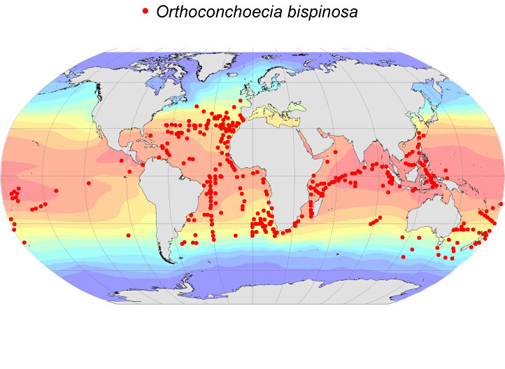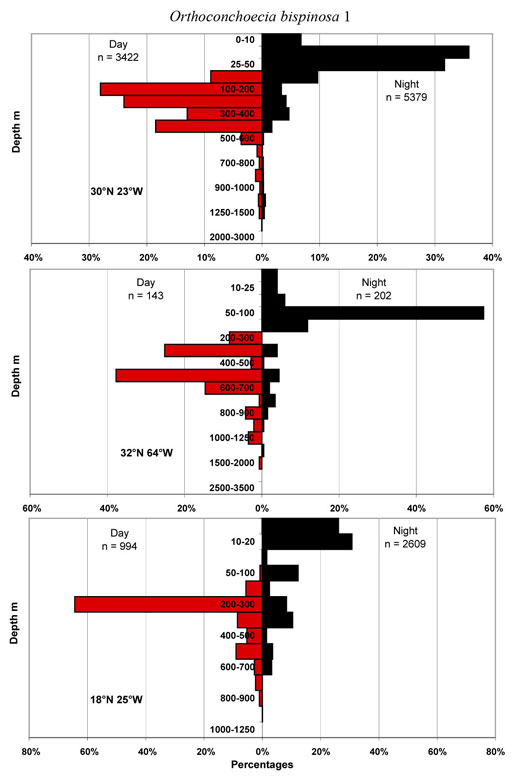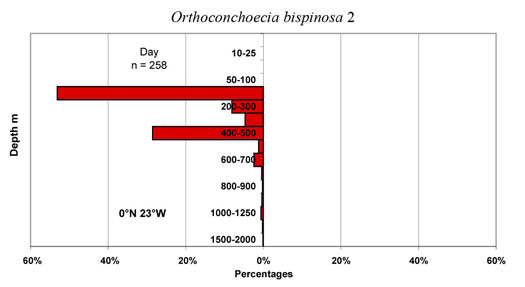Notes
633 records
Müller (1906) classified this species in his ‘bispinosa group’, for which Granata and Caporiacco (1949) proposed the genus Orthoconchoecia, designating O. striola as the type species. This genus was also adopted by Poulsen (1973), but not by Angel (1970) when he differentiated the larger O. secerenda (Vavra, 1906) from this species – both Müller (1906) and Poulsen (1973) had considered the two species to be synonymous. Living specimens are readily distinguished, since O. bispinosa is translucent and delicately pigmented; whereas secernenda is more opaque and more intensely pigmented and also its shoulder vaults are much more evident, particularly in the juvenile instars. The map shows that its latitudinal range is 47° to 52°S. By day it is a shallow mesopelagic species with juveniles inhabiting shallower depths than the adults, resulting in two maxima in the profiles. At night all stages migrate up into the epipelagic zone and juveniles are frequently taken in neuston samples. Females also occur regularly at deeper depths down to 1000m
| Equator
|
n
|
Mean mm
|
s.d.
|
Range mm
|
|---|
| Female
| 40
|
1.85
|
0.070
|
1.68-2.00
|
|---|
| Male
|
27
|
1.65
|
0.037
|
1.54-1.70
|
|---|
| A-1
|
130
|
1.22
|
0.043
|
1.14-1.32
|
|---|
| A-2
|
66
|
0.84
|
0.031
|
0.78-0.92
|
|---|
| A-3
|
19
|
0.63
|
0.023
|
0.60-0.68
|
|---|
| SOND
|
n
|
Mean mm
|
s.d.
|
Range mm
|
|---|
| Female
|
288
|
1.94
|
0.076
|
1.80-2.10
|
|---|
| Male
|
203
|
1.93
|
1.934
|
1.80-2.03
|
|---|
| A-1
|
|
|
|
|
|---|
| Azores Front
|
n
|
Mean mm
|
s.d.
|
Range mm
|
|---|
| Female
|
16
|
1.90
|
0.076
|
1.82-2.08
|
|---|
| Male
|
4
|
1.76
|
0.022
|
1.72-1.78
|
|---|
| A-1
|
40
|
1.25
|
0.048
|
1.14-1.34
|
|---|
| A-2
|
58
|
0.86
|
0.032
|
0.80-0.94
|
|---|
| A-3
|
26
|
0.65
|
0.029
|
0.60-0.70
|
|---|






